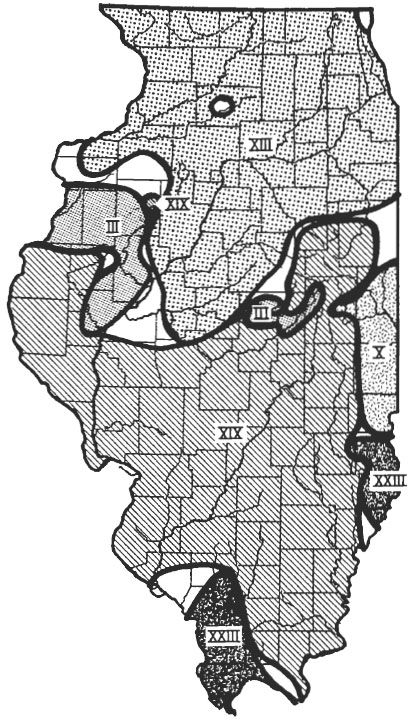The Great Eastern Brood
Brood X is neither the easternmost nor the largest of the broods. Even so, Brood X is among the largest (by geographic extent) broods of 17- year cicadas. A disjunct population exists on Long Island (Simon and Lloyd 1982). Populations historically recorded from Kentucky may be off-cycle emergences of Brood XIV (Lloyd and White 1976). Marlatt (1923) recorded Brood X in Missouri; however, current opinion on these records is that they reflect a co-emergence of Broods XIX and X and stragglers from Broods XIX and XXIII that were mistakenly attributed to Brood X over several cicada generations (Marshall 2001). This brood includes the species Magicicada cassini, Magicicada septendecim, and Magicicada septendecula. Michigan populations are generally only M. septendecim; however, M. cassini has been recorded in the state (Marshall et al. 1996). In Ohio, populations of Broods VI, X, and XIV are closely associated, and local populations may be switching from one brood schedule to another (see Kritsky 1987, Kritsky 1988, Kritsky et al. 2005).
In the map below, cicada symbols are verified presence records and red symbols are verified absence records in our database as of March 2025. Click on points for details. Gold symbols are from Simon (1988); smaller symbols are records with a lower degree of certainty, and crosses represent records that are considered spurious. Blue symbols are from Marlatt (1923); smaller symbols are records with a lower degree of certainty, and question marks represent records that are considered spurious. Purple symbols and shading represent Stannard’s (1975) delineation of the brood in Illinois. Symbols are in layered in the order Database, Simon, Marlatt, Stannard and symbols in the upper layers may obscure symbols in lower layers. Note that the dates shown do not represent dates of adult emergence; rather, they represent dates on which choruses were active. Thus, in any given area, adult emergence may have occurred a week or more earlier than the dates shown on this map. This map may not be reproduced without written permission.

Illinois presents a particular challenge for understanding periodical cicada biology, because it contains both 13 and 17 year life cycles, all 7 currently recognized species, and five separate broods, some of which include disjunct populations.
Stannard (1975) published a map of all Illinois periodical cicada broods. Stannard’s map of Brood X closely matches the distribution as currently understood, with the exception of a population near Champaign IL, which belongs to Brood XIX.